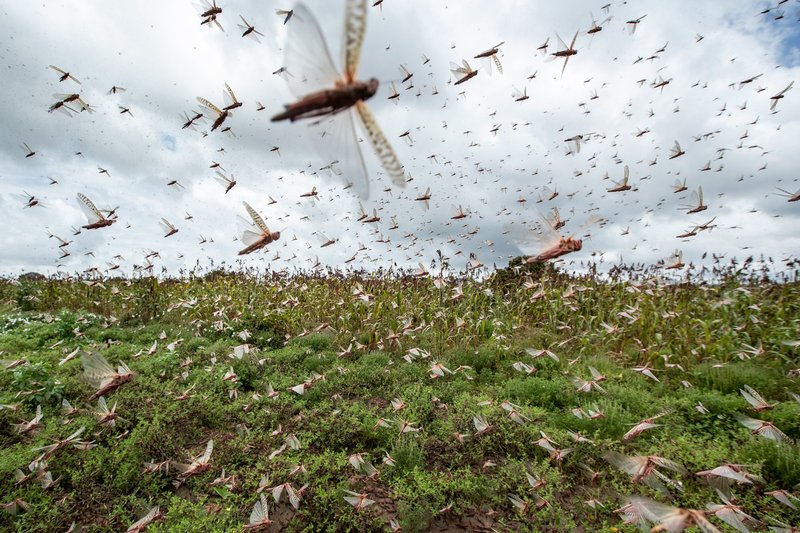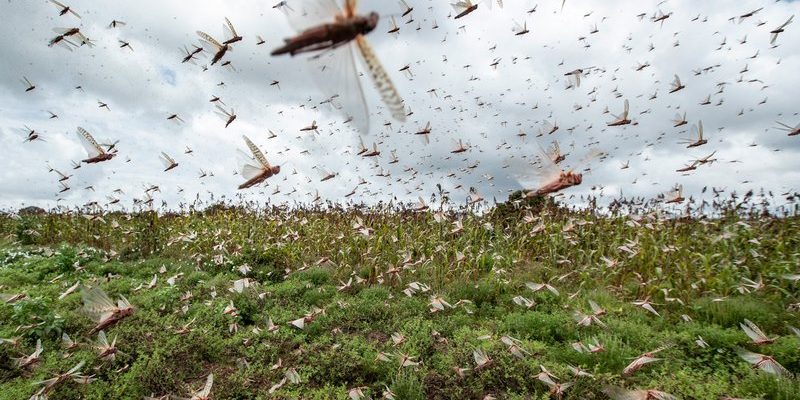
In this article, we’ll dive into the various predators and threats that locusts encounter. Think of it like exploring an intricate food web, where each creature plays a role. From birds to insects, and even environmental factors, locusts face multiple challenges. So, grab a cup of coffee and settle in as we explore their world.
The Role of Birds in Locust Predation
Birds are among the most significant predators of locusts. With sharp beaks and keen eyesight, they can spot a locust from quite a distance. Species like sparrows, starlings, and larger raptors take full advantage of swarms. Here’s the thing: when locusts gather in huge numbers, they attract more birds. It’s a bit like a buffet for feathered friends!
Birds usually hunt locusts in two main ways. They can either pick them off during flight or target them when they’re on the ground. For example, a hungry sparrow might swoop down and snatch a locust right off a blade of grass. This behavior significantly impacts locust populations, especially during swarming events when they’re most vulnerable.
Moreover, some birds even have a specific hunting strategy. They will often follow swarms during migrations, ensuring they have a reliable food source. This level of dependency showcases how powerful the predator-prey relationship is in nature.
Environmental Factors Affecting Bird Populations
While birds are effective locust predators, their effectiveness can vary based on environmental factors. Changes in climate, habitat destruction, and availability of food all influence bird populations. For instance, deforestation can reduce the number of birds that eat locusts, leading to potential increases in locust numbers.
Interestingly, not all regions experience these changes the same way. In some areas, conservation efforts can lead to a healthy increase in bird populations, keeping locust numbers in check. On the flip side, urbanization, which often leads to habitat loss, can create an imbalance, allowing locusts to thrive unchecked.
Insect Predators: The Tiny Assassins
While birds are the most visible predators, there’s a whole world of tiny insects that prey on locusts too. Various species of wasps and beetles target locusts, often laying their eggs inside or on them. Imagine this: a locust, minding its own business, suddenly becomes a host for an unseen invader.
One of the more notorious locust parasites is the egg-laying wasp. After laying its eggs on a locust, the larvae will hatch and start feeding on the host, eventually killing it. This gruesome process might sound like something out of a horror film, but it’s a natural part of the ecosystem.
Beyond wasps, some beetles, like the stink bug, also consume locusts. This can be devastating for locust populations, especially when you consider that a single beetle can eat numerous locusts in its lifetime.
Competition for Resources
Another threat comes from competition with other herbivores. As locusts graze on grass and crops, they often compete with other insects and animals for food. This competition can limit the resources available to locusts, affecting their growth and reproduction. If there are more grasshoppers or other herbivores in the area, locusts might struggle to find enough food to survive.
In environments where food is scarce, this competition can further weaken locust populations, making them more susceptible to predation.
Humans: An Unseen Threat
Humans might not be natural predators of locusts, but we can significantly impact their populations and habitats. Pesticides, for example, are often used to control agricultural pests, but they can also affect locusts. Often, these chemicals don’t discriminate between harmful insects and beneficial ones.
Additionally, human activity, like urban expansion and agriculture, can destroy locust habitats. When natural areas are replaced with buildings and farms, locusts lose their breeding grounds and food sources. Honestly, this can lead to significant population declines, leaving them vulnerable to their natural predators.
The Impact of Climate Change
Climate change presents another challenge. Shifting weather patterns can affect locust breeding cycles and migration routes. For instance, if temperatures rise or rainfall patterns change, locusts may find themselves in environments that are unsuitable for survival. This makes them more susceptible to both predators and starvation.
In summary, human activities have created a ripple effect that influences locust populations in various ways.
Parasites and Diseases: Hidden Predators
Just when you thought locusts had enough to worry about, enter parasites and diseases. These invisible threats can significantly affect locust health and population dynamics. One common parasite is the Entomophaga grylli, a type of fungus that infects locusts, often leading to death.
When locusts become infected, they typically exhibit strange behavior. They might become lethargic or lose their appetite, making them easy targets for predators like birds or beetles. This creates a cycle where parasites can contribute to the decline of locust populations, while also providing additional food for other predators.
Preventing Outbreaks
Because parasites and diseases can decimate locust populations, understanding how to manage outbreaks can be crucial. Here, scientists and agricultural experts work together to monitor locust health. By identifying and controlling these infections, they can help maintain a balance in the ecosystem.
You might be wondering why this is important. Healthy ecosystems benefit everyone. They help control pest populations naturally while supporting biodiversity.
So, what do we take away from this exploration of predators and threats to locusts? These insects are more than just a menace to farmers; they are part of a complex web of life, facing challenges from birds, insects, humans, and even parasites. Each factor plays a role in the stability of their populations, demonstrating the delicate balance in ecosystems.
By understanding the threats to locusts, we gain insights into the broader health of our environment. Whether you’re a curious reader or someone working in agriculture, recognizing these interactions can contribute to better practices and conservation efforts. So, the next time you encounter a swarm, remember that out in the wild, locusts have a whole congregation of eyes watching them—each part of a fascinating story of survival.

